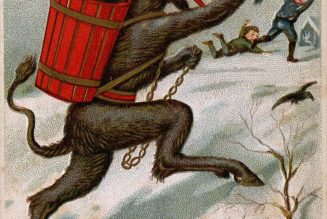The Theban alphabet otherwise known as the witch’s alphabet or runes of Honorious is believed to have emerged in the medieval period when cabbalistic practices were prominent among European magicians.
Theban was first published in a book called the Polygraphia in 1518.
This book was written by Johannes Trithemius. Before the first book was published, there were other evidences of the Theban Alphabet in the 14th century.
This was in the Sworne Book of Honorious or the Liber Juratus.
Most of these evidences attributed Honorius as the creator of the Theban Script.
However, Honorius was not a witch, but a mogus.
The language also appeared in the 16th century in Cornelius Agrippa’s book know as the Three Books of occult philosophy.
Agrippa was Trithemius’ student and his book was first published in 1531 in Antwerp.
According to Agrippa, the Theban script was initially attributed to Honorius by an Italian magician in the 13th century.
The Theban Alphabet is also believed to have been in existence in the 11th century as a Latin cipher.
Compared to the Latin alphabets, there is a one to one correspondences between the alphabets with the exception of the letter I, v and w.
When writing the Theban script, the letter I is represented by the same symbol as j, while letter v is represented by the same symbol as u and w.
Despite the origin of the letter-forms being obscure, the evidence of the script’s origin is consistent with an early cipher alphabet believed to have been influenced by Avestan.
Some magicians also believe the language to have originated from the book entitled The Mogus written by Honorius II. HonoriusII was the pope between 1216 and 1227.
The Theban script was used to lend an air of mystery to witchcraft writing and often referred to as the Witches runes.
Runes were often inscribed on various items worm by a person for varying reasons such as wearer’s protection.
This alphabet is popularly used in witchcraft as it enables witches to communicate among themselves and write their spells translating from their native languages.
The script was used in writing the Book of Shadows used by witches to maintain secrecy.
Since the alphabets and symbols used in writing Theban script were not familiar to the native languages, the witches could effectively write their spells without other people reading them.
The Alphabets used in Theban script corresponded to the Latin alphabets with the only exceptions being for the letters I, J, V, and U.
The symbols used to represent letter j were similar to that of letter I while the letter v and us used a similar symbol.
Pagans have also been recorded to have used various alphabets in their rituals and often in-scripted those on items used in magickal rituals such as candles and stones.
Runes were also used in rituals by the Wiccans.
Runes were often used for person protection and were similar to the modern Christian crucifix or the pagan Thor’s hammer. Ancient literature on various rituals recorded the runes as rune sticks.
In Iceland and Norway, the runes were recorded in the form of scorn poles.
Today, the Theban alphabet is primarily used for talismanic inscriptions and magickal spells.
The letters and symbols are also carved on stones candles for candle spells as well as on stones as amulets.
Besides spells, the Theban script is also used for charms in addition to creating a magickal feels to texts and writing.



































